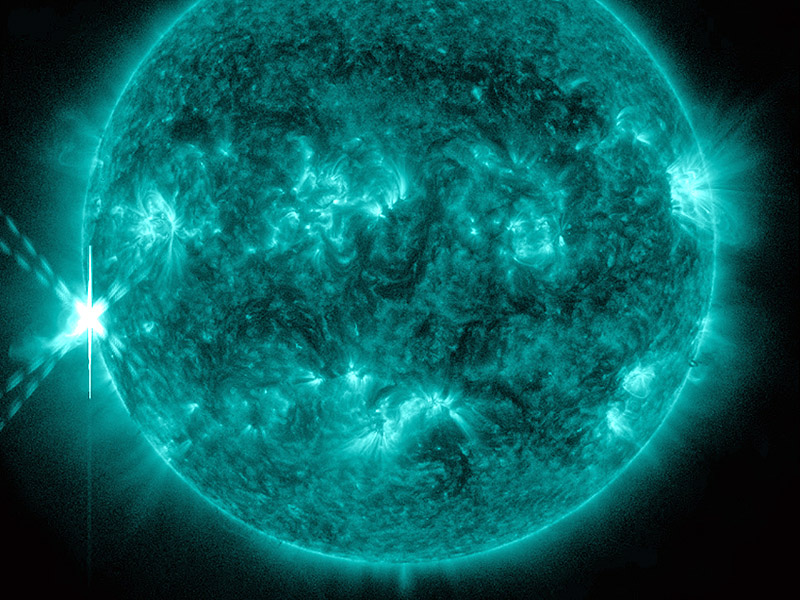NASA’s Solar Dynamics Observatory (SDO) captured this image of an M9-class flare on Oct 20th, 2012 at 2:14pm EDT. This image shows light at a wavelength of 131 Angstroms, which corresponds to material at 10 million Kelvin, and is a good wavelength for observing flares. This wavelength is typically colorized as teal, as shown here. (Credit: NASA/SDO)
Home NASA’s Solar Dynamics Observatory (SDO) captured this image of an M9-class flare on Oct 20th, 2012 at 2:14pm EDT. This image shows light at a wavelength of 131 Angstroms, which corresponds to material at 10 million Kelvin, and is a good wavelength for observing flares. This wavelength is typically colorized as teal, as shown here. (Credit: NASA/SDO) NASA's Solar Dynamics Observatory (SDO) captured this image of an M9-class flare on Oct 20th, 2012 at 2:14pm EDT. This image shows light at a wavelength of 131 Angstroms, which corresponds to material at 10 million Kelvin, and is a good wavelength for observing flares. This wavelength is typically colorized as teal, as shown here. (Credit: NASA/SDO)
NASA’s Solar Dynamics Observatory (SDO) captured this image of an M9-class flare on Oct 20th, 2012 at 2:14pm EDT. This image shows light at a wavelength of 131 Angstroms, which corresponds to material at 10 million Kelvin, and is a good wavelength for observing flares. This wavelength is typically colorized as teal, as shown here. (Credit: NASA/SDO)


